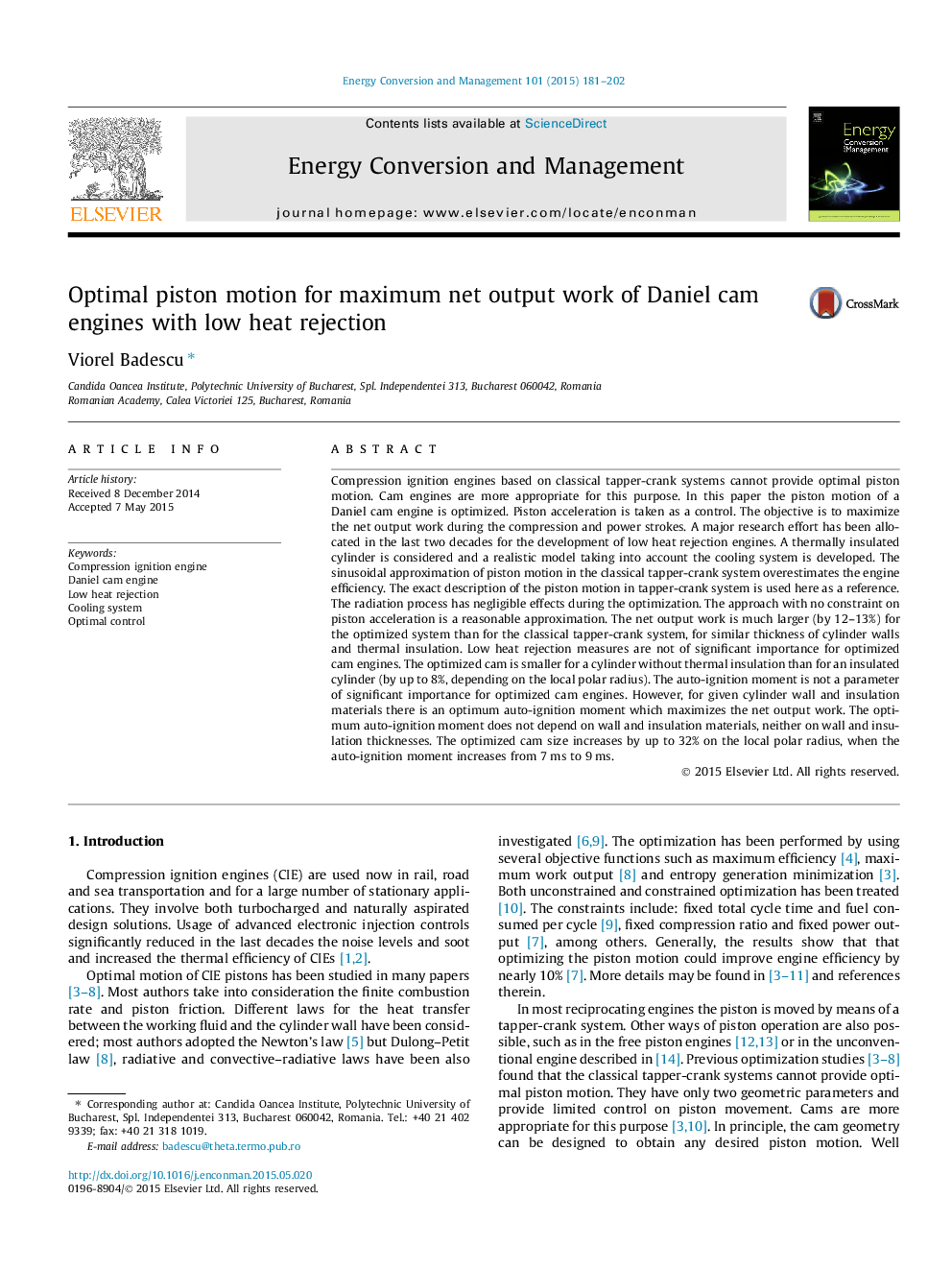| کد مقاله | کد نشریه | سال انتشار | مقاله انگلیسی | نسخه تمام متن |
|---|---|---|---|---|
| 7162468 | 1462861 | 2015 | 22 صفحه PDF | دانلود رایگان |
عنوان انگلیسی مقاله ISI
Optimal piston motion for maximum net output work of Daniel cam engines with low heat rejection
ترجمه فارسی عنوان
حرکت پیستونی بهینه برای حداکثر کار خروجی خالی موتورهای دانیل با رد کم گرما
دانلود مقاله + سفارش ترجمه
دانلود مقاله ISI انگلیسی
رایگان برای ایرانیان
کلمات کلیدی
موتور احتراق فشرده، دانیل موتور کامیون، رد گرما کم سیستم خنک کننده، کنترل بهینه،
موضوعات مرتبط
مهندسی و علوم پایه
مهندسی انرژی
انرژی (عمومی)
چکیده انگلیسی
Compression ignition engines based on classical tapper-crank systems cannot provide optimal piston motion. Cam engines are more appropriate for this purpose. In this paper the piston motion of a Daniel cam engine is optimized. Piston acceleration is taken as a control. The objective is to maximize the net output work during the compression and power strokes. A major research effort has been allocated in the last two decades for the development of low heat rejection engines. A thermally insulated cylinder is considered and a realistic model taking into account the cooling system is developed. The sinusoidal approximation of piston motion in the classical tapper-crank system overestimates the engine efficiency. The exact description of the piston motion in tapper-crank system is used here as a reference. The radiation process has negligible effects during the optimization. The approach with no constraint on piston acceleration is a reasonable approximation. The net output work is much larger (by 12-13%) for the optimized system than for the classical tapper-crank system, for similar thickness of cylinder walls and thermal insulation. Low heat rejection measures are not of significant importance for optimized cam engines. The optimized cam is smaller for a cylinder without thermal insulation than for an insulated cylinder (by up to 8%, depending on the local polar radius). The auto-ignition moment is not a parameter of significant importance for optimized cam engines. However, for given cylinder wall and insulation materials there is an optimum auto-ignition moment which maximizes the net output work. The optimum auto-ignition moment does not depend on wall and insulation materials, neither on wall and insulation thicknesses. The optimized cam size increases by up to 32% on the local polar radius, when the auto-ignition moment increases from 7Â ms to 9Â ms.
ناشر
Database: Elsevier - ScienceDirect (ساینس دایرکت)
Journal: Energy Conversion and Management - Volume 101, 1 September 2015, Pages 181-202
Journal: Energy Conversion and Management - Volume 101, 1 September 2015, Pages 181-202
نویسندگان
Viorel Badescu,
